Edward FitzGerald
& The Bull Inn
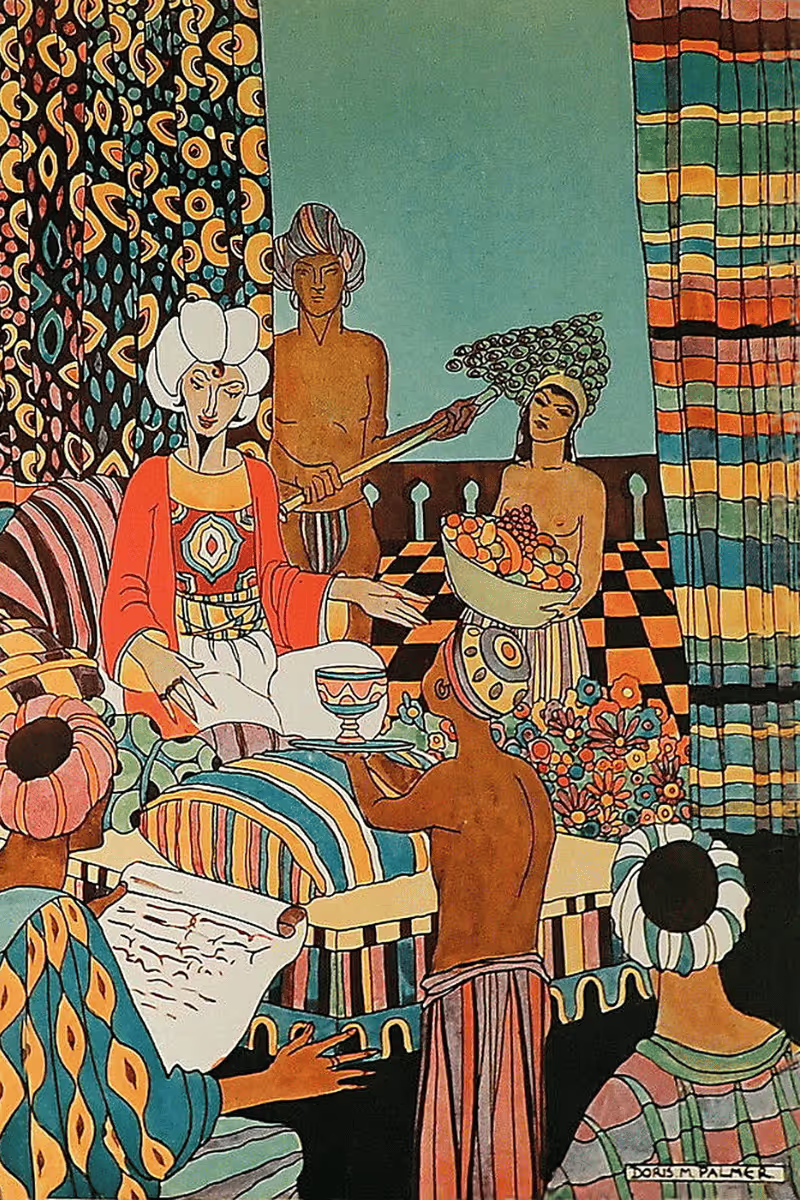
The Golden Age of Art
Edward FitzGerald (1809–1883) is best remembered as the English translator of The Rubáiyát of Omar Khayyám, a Persian poetic masterpiece that captivated Victorian Britain and went on to inspire generations of writers, artists, and philosophers. While his literary reputation grew quietly during his lifetime, FitzGerald’s name is now indelibly linked not only to world literature, but also to the town of Woodbridge—a place he called home, and where his quiet genius truly flourished.
Born into wealth and privilege, FitzGerald lived much of his life in the Suffolk countryside, deliberately removed from the public eye. Although he studied at Cambridge and moved in distinguished literary circles, FitzGerald preferred a life of reflection and solitude. He spent his time sailing on the River Deben, reading, and engaging with local characters—eschewing fame in favour of a simpler, more grounded existence.
One of the places that became a quiet backdrop to his daily life was The Bull Inn, located just steps from his modest flat at 10 Market Hill where he lived from 1860 to 1873. FitzGerald was a regular at The Bull, enjoying simple meals, a beer, good conversation, and the company of locals. In a letter to a friend, he affectionately referred to The Bull as “our cheerful hostelry,” praising its unpretentious comfort. He reportedly enjoyed a Scotch ale by the fire until, as he put it, the coals had but a “smile on their face.”
FitzGerald was good friends with the landlord, John Grout, who would send him a gift of mince pies and a jug of punch every Christmas. FitzGerald often hosted literary friends at The Bull, including Alfred, Lord Tennyson and William Makepeace Thackeray. After one visit from Tennyson, FitzGerald remarked that Woodbridge should feel honoured to have received such a guest. Grout, unfamiliar with Tennyson’s literary fame, replied wryly: “Dissay he might be the Poet Laureate, but he don’t know much about hosses when I showed him over my stables.”
The Bull was more than just a coaching inn—it was a social and cultural hub of Woodbridge. It was here that FitzGerald observed and absorbed the quiet rhythms of Suffolk life. Though much of his work was created in solitude, the conversations and characters he encountered in places like The Bull undoubtedly shaped his worldview. This balance between contemplation and conviviality is echoed in The Rubáiyát, with its reflections on fleeting time, earthly pleasures, and the search for meaning beyond convention.
FitzGerald was part of a loosely knit group of local creatives known as the Woodbridge Wits. This informal circle included Bernard Barton, the Quaker poet; George Crabbe, the realist poet and clergyman; and Thomas Churchyard, an artist and solicitor known for his evocative Suffolk landscapes. Though not a formal society, the group met regularly—often at The Bull—to share ideas, discuss literature and art, and enjoy thoughtful company. Their wit, warmth, and quiet brilliance left a lasting imprint on the cultural identity of the town.
While The Rubáiyát was initially published anonymously and in a limited run, it gradually gained attention, particularly among Pre-Raphaelite artists and literary enthusiasts who admired its sensual and mystical tone. By the time of FitzGerald’s death in 1883, he was receiving overdue recognition for a translation now considered one of the most important literary achievements of the 19th century. The book would go on to sell in the hundreds of millions worldwide and FitzGerald is often referred to as the Bard of Suffolk.
The success of The Rubáiyát inspired the founding of several Omar Khayyám Clubs, the most notable being the one in London, established in 1892. Created to honour FitzGerald’s work, the club attracted writers, artists, scholars, and admirers of Persian poetry. Its gatherings celebrated the hedonistic yet philosophical spirit of Khayyám’s verses—marked by toasts, recitations, and lively discussion. The club played a key role in cementing FitzGerald’s posthumous reputation, and to this day, members continue to visit The Bull and Woodbridge, a place many consider FitzGerald’s spiritual home.
Carlow’s Room at The Bull pays homage to the Omar Khayyám Club, featuring design elements inspired by the club’s emblem—the red rose. The room is decorated in an Art Nouveau style, evoking the period when Woodbridge, The Bull, FitzGerald, and John Grout were at their cultural peak.
The red rose, now a symbol of FitzGerald’s legacy, appears on the Woodbridge coat of arms and blooms in Elmhurst Park, further tying the poet’s memory to the town’s identity. Visitors to The Bull today can still enjoy the same warm setting that once welcomed one of England’s most quietly influential literary minds. His spirit lingers in the history of the inn, the stories of the town, and the timeless verses of a poem that continues to inspire readers across the globe.
Around The Bull and in the guest rooms, visitors will find a selection of Rubáiyát-inspired artworks—interpretations of FitzGerald’s literary masterpiece by various artists, each one capturing the enduring allure of a work that bridges cultures, centuries, and hearts.
Born into wealth and privilege, FitzGerald lived much of his life in the Suffolk countryside, deliberately removed from the public eye. Although he studied at Cambridge and moved in distinguished literary circles, FitzGerald preferred a life of reflection and solitude. He spent his time sailing on the River Deben, reading, and engaging with local characters—eschewing fame in favour of a simpler, more grounded existence.
One of the places that became a quiet backdrop to his daily life was The Bull Inn, located just steps from his modest flat at 10 Market Hill where he lived from 1860 to 1873. FitzGerald was a regular at The Bull, enjoying simple meals, a beer, good conversation, and the company of locals. In a letter to a friend, he affectionately referred to The Bull as “our cheerful hostelry,” praising its unpretentious comfort. He reportedly enjoyed a Scotch ale by the fire until, as he put it, the coals had but a “smile on their face.”
FitzGerald was good friends with the landlord, John Grout, who would send him a gift of mince pies and a jug of punch every Christmas. FitzGerald often hosted literary friends at The Bull, including Alfred, Lord Tennyson and William Makepeace Thackeray. After one visit from Tennyson, FitzGerald remarked that Woodbridge should feel honoured to have received such a guest. Grout, unfamiliar with Tennyson’s literary fame, replied wryly: “Dissay he might be the Poet Laureate, but he don’t know much about hosses when I showed him over my stables.”
The Bull was more than just a coaching inn—it was a social and cultural hub of Woodbridge. It was here that FitzGerald observed and absorbed the quiet rhythms of Suffolk life. Though much of his work was created in solitude, the conversations and characters he encountered in places like The Bull undoubtedly shaped his worldview. This balance between contemplation and conviviality is echoed in The Rubáiyát, with its reflections on fleeting time, earthly pleasures, and the search for meaning beyond convention.
FitzGerald was part of a loosely knit group of local creatives known as the Woodbridge Wits. This informal circle included Bernard Barton, the Quaker poet; George Crabbe, the realist poet and clergyman; and Thomas Churchyard, an artist and solicitor known for his evocative Suffolk landscapes. Though not a formal society, the group met regularly—often at The Bull—to share ideas, discuss literature and art, and enjoy thoughtful company. Their wit, warmth, and quiet brilliance left a lasting imprint on the cultural identity of the town.
While The Rubáiyát was initially published anonymously and in a limited run, it gradually gained attention, particularly among Pre-Raphaelite artists and literary enthusiasts who admired its sensual and mystical tone. By the time of FitzGerald’s death in 1883, he was receiving overdue recognition for a translation now considered one of the most important literary achievements of the 19th century. The book would go on to sell in the hundreds of millions worldwide and FitzGerald is often referred to as the Bard of Suffolk.
The success of The Rubáiyát inspired the founding of several Omar Khayyám Clubs, the most notable being the one in London, established in 1892. Created to honour FitzGerald’s work, the club attracted writers, artists, scholars, and admirers of Persian poetry. Its gatherings celebrated the hedonistic yet philosophical spirit of Khayyám’s verses—marked by toasts, recitations, and lively discussion. The club played a key role in cementing FitzGerald’s posthumous reputation, and to this day, members continue to visit The Bull and Woodbridge, a place many consider FitzGerald’s spiritual home.
Carlow’s Room at The Bull pays homage to the Omar Khayyám Club, featuring design elements inspired by the club’s emblem—the red rose. The room is decorated in an Art Nouveau style, evoking the period when Woodbridge, The Bull, FitzGerald, and John Grout were at their cultural peak.
The red rose, now a symbol of FitzGerald’s legacy, appears on the Woodbridge coat of arms and blooms in Elmhurst Park, further tying the poet’s memory to the town’s identity. Visitors to The Bull today can still enjoy the same warm setting that once welcomed one of England’s most quietly influential literary minds. His spirit lingers in the history of the inn, the stories of the town, and the timeless verses of a poem that continues to inspire readers across the globe.
Around The Bull and in the guest rooms, visitors will find a selection of Rubáiyát-inspired artworks—interpretations of FitzGerald’s literary masterpiece by various artists, each one capturing the enduring allure of a work that bridges cultures, centuries, and hearts.


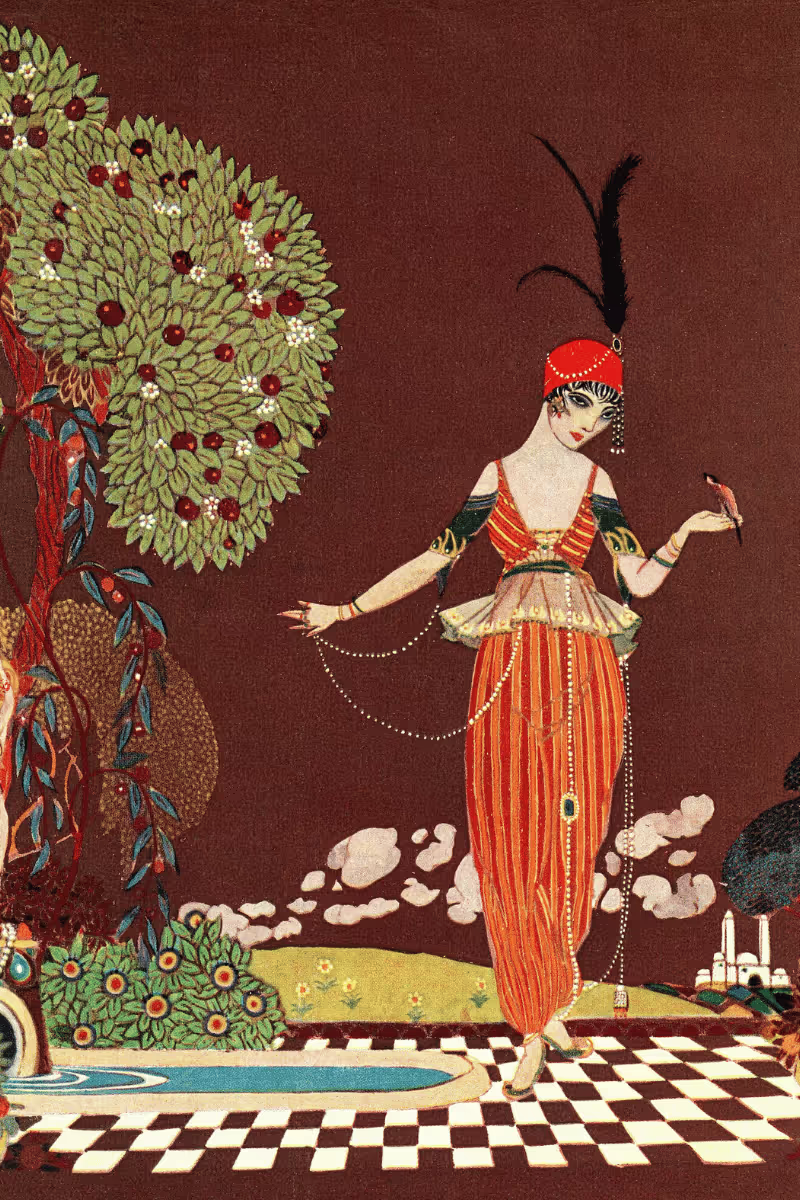
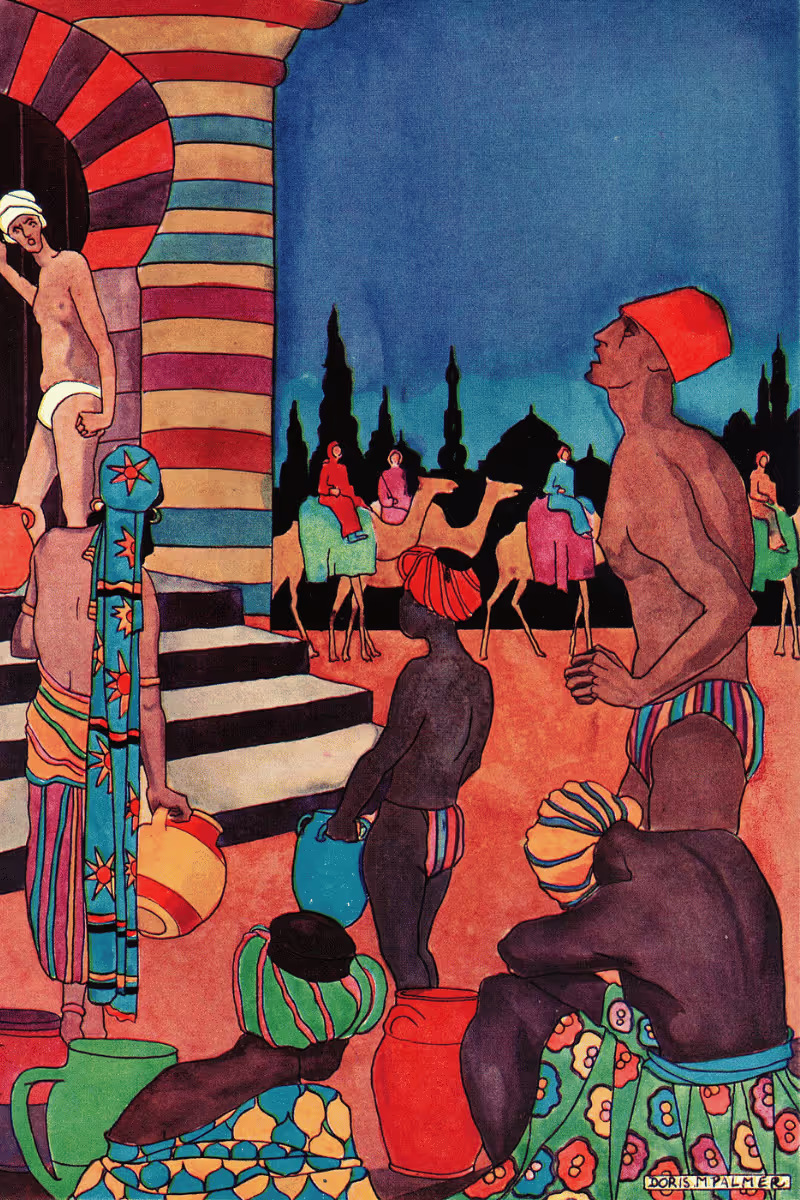
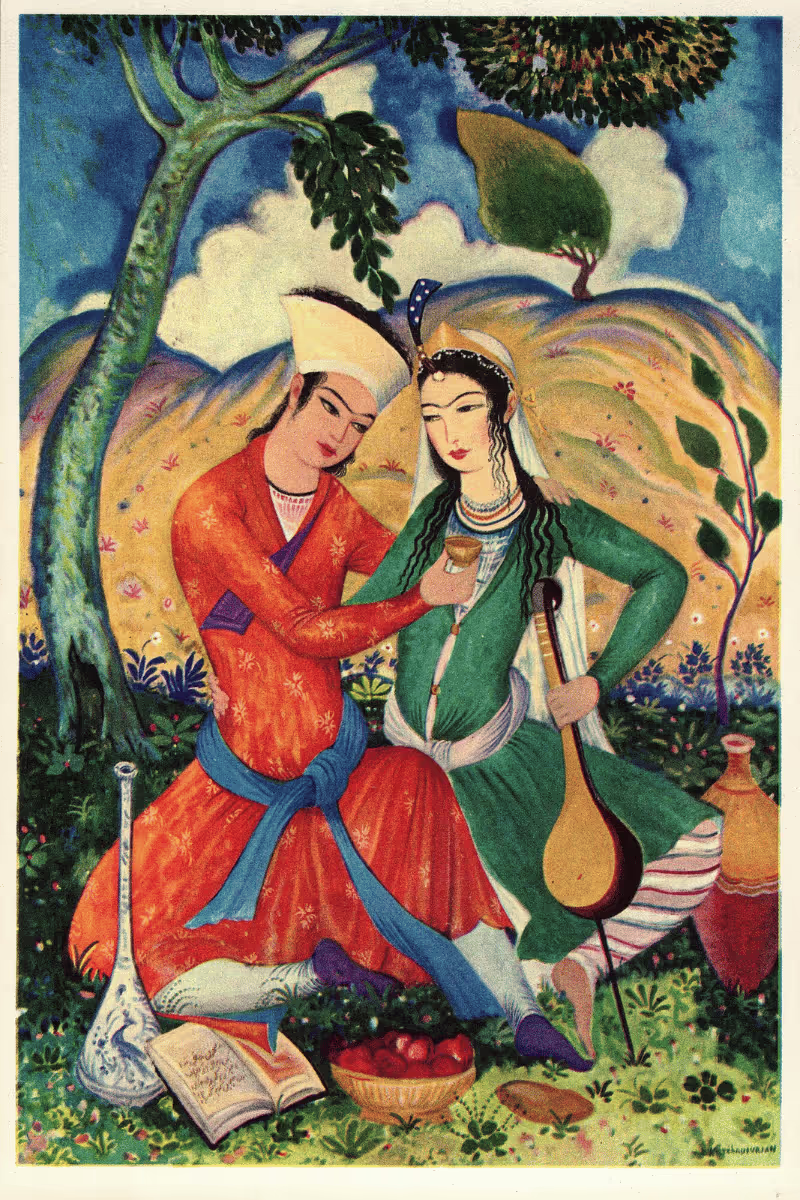
.avif)

.avif)
.avif)
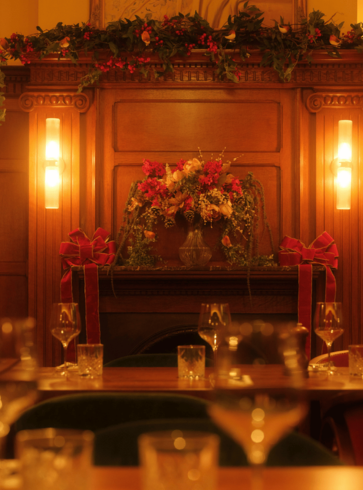
.avif)
